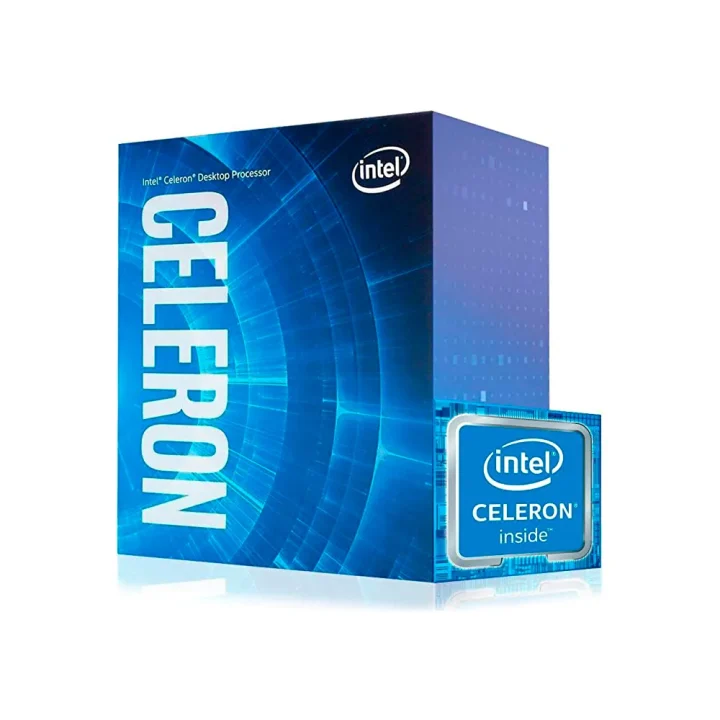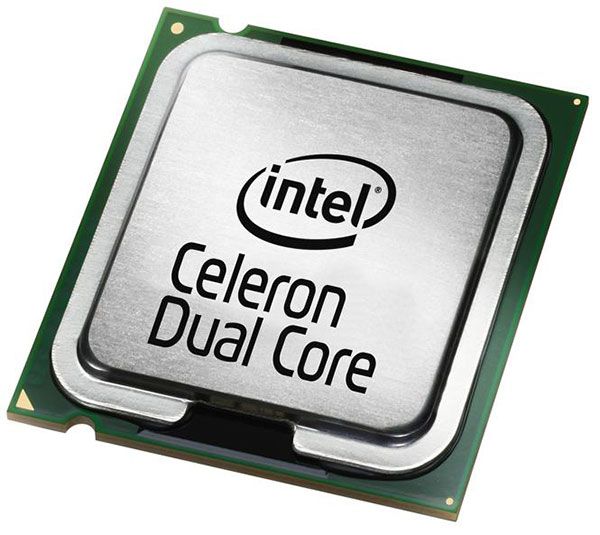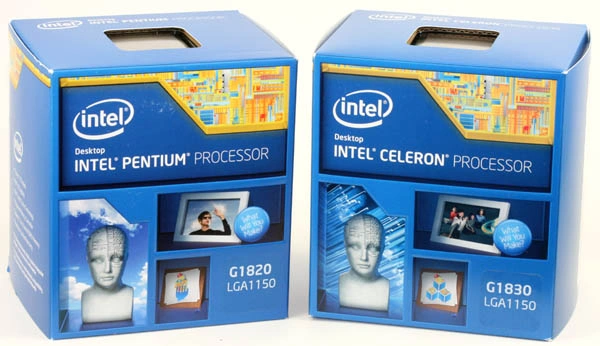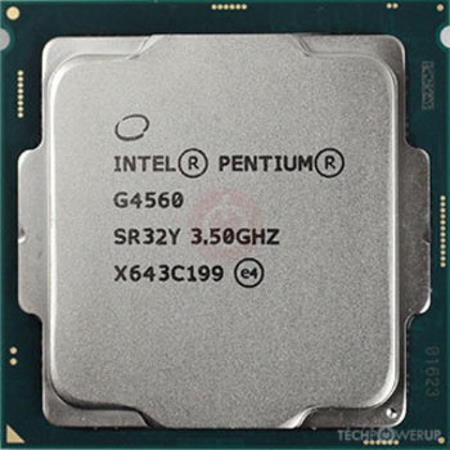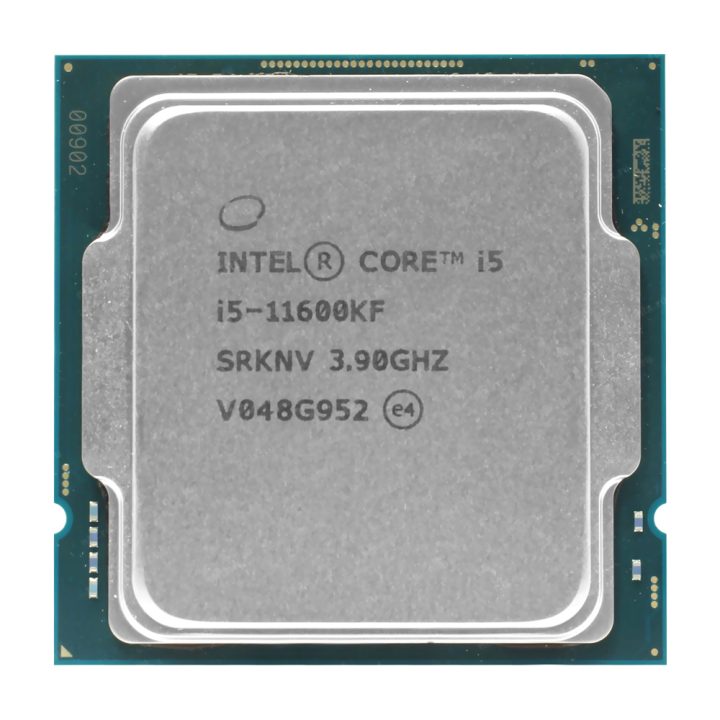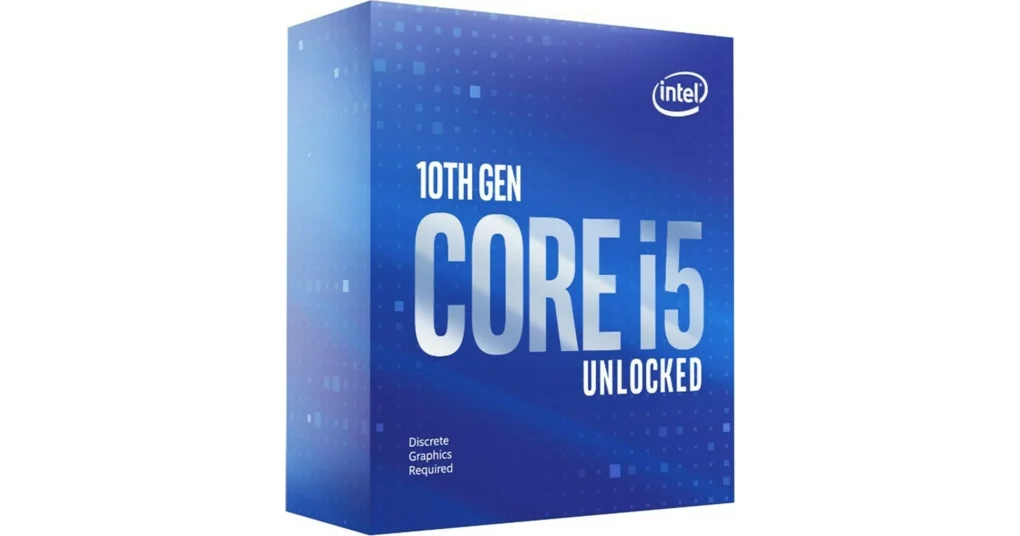Exploring the Pros and Cons of Intel Celeron Dual Core G6600 4.20GHz: A Complete Analysis
The Intel Celeron processor line has long been a staple in the budget-conscious computing market, offering a cost-effective solution for users with basic computing needs. Within this lineup, the Intel Celeron Dual Core G6600 4.20GHz processor stands out as a capable and affordable option, catering to those seeking a balance between performance and value.
The Celeron series has traditionally occupied the lower end of Intel’s processor hierarchy, positioned below the more powerful Core i3, i5, and i7 models. However, the G6600 model aims to provide a compelling alternative for users who don’t require the advanced features and higher-end performance of the more premium Intel processors. With its dual-core design and respectable clock speed, the G6600 promises to deliver a solid foundation for everyday tasks and light productivity workloads.
Key features of the Intel Celeron Dual Core G6600 4.20GHz include its dual-core architecture, 4.20GHz clock speed, and support for a wide range of motherboard chipsets and socket types. These specifications suggest that the G6600 is well-suited for budget-conscious system builders, entry-level desktop users, and those seeking a cost-effective upgrade option for their existing systems.
Key Takeaways
- The Intel Celeron Dual Core G6600 4.20GHz is an entry-level processor designed for basic computing tasks.
- Its architecture and performance capabilities make it suitable for light multitasking and everyday computing needs.
- The processor’s advantages include affordability, low power consumption, and compatibility with a wide range of systems.
- However, its disadvantages include limited performance for demanding tasks and lack of upgrade potential.
- Benchmarking and real-world performance evaluations show that the G6600 is best suited for budget-friendly, entry-level systems.
Processor Architecture and Performance Capabilities
The Intel Celeron Dual Core G6600 4.20GHz processor is built upon a dual-core design, which has significant implications for its performance capabilities. Dual-core processors are well-suited for multitasking and parallel processing, as they can handle multiple tasks or threads simultaneously, improving overall system responsiveness and efficiency.
The G6600’s clock speed of 4.20GHz is a notable aspect of its performance profile. Higher clock speeds generally translate to better single-threaded performance, which can be beneficial for applications that are not heavily optimized for parallel processing. This makes the G6600 a viable option for users who prioritize snappy application launch times and smooth performance in everyday productivity tasks.
When compared to other Celeron and budget-oriented processors in the market, the G6600 holds its own in terms of performance. While it may not match the raw power of higher-end Intel Core processors or AMD’s Ryzen lineup, the G6600 offers a compelling balance of performance and value. Its dual-core architecture and respectable clock speed allow it to handle basic computing tasks with relative ease, making it a suitable choice for users with modest performance requirements.
Advantages of the Intel Celeron Dual Core G6600 4.20GHz
One of the primary advantages of the Intel Celeron Dual Core G6600 4.20GHz is its cost-effective nature, making it an attractive option for budget-conscious consumers. As a budget-oriented processor, the G6600 provides a cost-effective solution for users who don’t require the advanced features and higher-end performance of more premium Intel processors. This makes it a viable choice for those building entry-level desktop systems or seeking a cost-effective upgrade for their existing machines.
In terms of everyday performance, the G6600 offers adequate capabilities for light productivity tasks, web browsing, media consumption, and other common computing activities. Its dual-core design and 4.20GHz clock speed ensure that it can handle these everyday workloads with relative ease, providing a smooth and responsive user experience. While it may not excel in more demanding applications or workloads, the G6600 is well-suited for users whose computing needs are primarily focused on basic tasks and light productivity.
Another advantage of the Intel Celeron Dual Core G6600 4.20GHz is its energy-efficient design and lower power consumption. This can be particularly beneficial for users who are conscious of their energy bills or environmental impact, as the G6600’s power-efficient architecture can contribute to reduced energy usage and a smaller carbon footprint. Additionally, the G6600’s compatibility with a wide range of motherboards and systems makes it a versatile option for system builders and DIY enthusiasts, allowing them to integrate the processor into a variety of system configurations.
Disadvantages of the Intel Celeron Dual Core G6600 4.20GHz
While the Intel Celeron Dual Core G6600 4.20GHz offers a cost-effective solution for basic computing needs, it does have some limitations compared to higher-end processors. One of the primary disadvantages is its limited performance capabilities, particularly in more demanding applications or workloads. The dual-core design and 4.20GHz clock speed may struggle to keep up with the performance demands of resource-intensive tasks, such as video editing, 3D rendering, or running multiple resource-intensive applications simultaneously.
Another potential drawback of the G6600 is the possibility of encountering bottlenecks in certain scenarios. While the processor may handle everyday tasks well, it may not be able to fully utilize the capabilities of more powerful system components, such as high-end graphics cards or fast storage devices. This can result in performance limitations and potential system bottlenecks, which may be noticeable in specific use cases or workloads.
Furthermore, the Intel Celeron Dual Core G6600 4.20GHz lacks some of the advanced features found in more premium processors. Features like hyper-threading, higher core counts, and more robust cache configurations are typically reserved for Intel’s higher-end Core i3, i5, and i7 models. The absence of these advanced features may limit the G6600’s long-term usability and future-proofing, as more demanding applications and workloads continue to evolve and require greater processing power.
Benchmarking and Real-World Performance Evaluation
| Pros | Cons |
|---|---|
| High clock speed | Limited number of cores |
| Low power consumption | Not suitable for heavy multitasking |
| Affordable price | Lower performance compared to higher-end processors |
To assess the performance capabilities of the Intel Celeron Dual Core G6600 4.20GHz, it is essential to examine both synthetic benchmark results and its real-world performance in common productivity, multimedia, and gaming scenarios.
Synthetic benchmark results provide a standardized and controlled environment to evaluate the processor’s performance across various metrics, such as single-threaded and multi-threaded performance, memory bandwidth, and computational capabilities. These benchmark scores can offer valuable insights into the G6600’s strengths and weaknesses compared to other processors in the market.
When it comes to real-world performance, the Intel Celeron Dual Core G6600 4.20GHz demonstrates its capabilities in everyday tasks and light productivity workloads. It excels in activities like web browsing, document editing, media playback, and light photo editing, providing a smooth and responsive user experience. However, in more demanding applications or workloads that require significant processing power, the G6600 may start to show its limitations, potentially resulting in slower performance or the need to optimize system configurations to mitigate any bottlenecks.
Comparing the G6600’s performance to alternative budget-friendly processor options, such as other Celeron models or AMD’s Ryzen 3 series, can provide a more comprehensive understanding of its positioning in the market. This comparative analysis can help users make informed decisions based on their specific computing needs and performance requirements.
Power Consumption and Thermal Considerations
The Intel Celeron Dual Core G6600 4.20GHz processor is designed with power efficiency in mind, which is a crucial consideration for budget-conscious consumers and system builders. The processor’s thermal design power (TDP) rating, which represents the maximum amount of heat it can generate, is an important factor in determining the system’s cooling requirements.
The G6600’s TDP of 58 watts suggests that it has a relatively low power consumption profile compared to higher-end processors. This can be advantageous for users who prioritize energy efficiency, as the G6600’s power-efficient design can contribute to lower energy bills and a reduced environmental impact.
When it comes to system cooling, the G6600’s TDP allows for the use of more affordable and compact cooling solutions, such as basic air coolers or even passive heatsinks in some cases. This can be particularly beneficial for system builders who are working with limited space or budget constraints, as they can opt for simpler and less expensive cooling setups without compromising the processor’s thermal performance.
The power efficiency and thermal considerations of the Intel Celeron Dual Core G6600 4.20GHz make it a suitable choice for a wide range of system configurations, from compact form factors to more traditional desktop builds. This versatility allows users to tailor their systems to their specific needs and preferences, whether they prioritize energy savings, space constraints, or a balance between performance and cost-effectiveness.
Compatibility and Upgrade Potential
The Intel Celeron Dual Core G6600 4.20GHz processor is designed to be compatible with a wide range of motherboard chipsets and socket types, making it a versatile option for system builders and DIY enthusiasts.
The G6600 utilizes the LGA 1200 socket, which is the same socket used by Intel’s more premium Core i3, i5, and i7 processors. This socket compatibility allows users to potentially upgrade their systems in the future by replacing the G6600 with a higher-performing Intel processor, should their computing needs evolve over time.
In terms of motherboard chipset support, the G6600 is compatible with a variety of chipsets, including the Intel 400 and 500 series, which are commonly found in budget-oriented and mainstream desktop systems. This broad compatibility ensures that the G6600 can be easily integrated into a wide range of system configurations, catering to the needs of both entry-level and more experienced system builders.
For users who are considering building a new system or upgrading an existing one, the Intel Celeron Dual Core G6600 4.20GHz presents an attractive option. Its socket and chipset compatibility allow for flexibility in system design and the potential for future upgrades, making it a compelling choice for budget-conscious consumers and DIY enthusiasts alike.
Use Cases and Target Audience
The Intel Celeron Dual Core G6600 4.20GHz processor is well-suited for a variety of use cases and target audiences, primarily focused on basic computing needs and budget-conscious consumers.
One of the ideal use cases for the G6600 is in entry-level desktop systems, where users prioritize affordability and adequate performance for everyday tasks. This includes tasks such as web browsing, document editing, media consumption, and light productivity work. The G6600’s dual-core design and respectable clock speed make it a capable choice for these types of workloads, providing a cost-effective solution for users who don’t require the advanced features or higher-end performance of more premium processors.
Another potential use case for the G6600 is in systems targeted at budget-conscious consumers, such as home office setups, basic productivity workstations, or even entry-level gaming rigs. While the G6600 may not excel in more demanding applications or gaming scenarios, it can still provide a satisfactory user experience for these types of users, who are primarily focused on affordability and meeting their basic computing needs.
The target audience for the Intel Celeron Dual Core G6600 4.20GHz includes a wide range of users, from students and home users to small business owners and budget-conscious system builders. These users may prioritize cost-effectiveness, energy efficiency, and adequate performance for their everyday computing tasks, making the G6600 a compelling option in the budget-oriented processor market.
Is the Intel Celeron Dual Core G6600 4.20GHz a Worthy Processor?
In conclusion, the Intel Celeron Dual Core G6600 4.20GHz processor offers a compelling balance of performance and value for users with basic computing needs. Its key advantages include its cost-effective nature, adequate performance for everyday tasks and light productivity, energy-efficient design, and broad compatibility with a wide range of motherboards and systems.
However, the G6600 also has some limitations, such as its relatively limited performance compared to higher-end processors, potential bottlenecks in more demanding applications or workloads, and the lack of advanced features found in more premium Intel processors.
When it comes to real-world performance, the G6600 shines in common productivity, multimedia, and basic gaming scenarios, providing a smooth and responsive user experience. Its synthetic benchmark results also demonstrate its capabilities, though it may fall short in more intensive workloads.
For users who prioritize affordability, energy efficiency, and adequate performance for their everyday computing needs, the Intel Celeron Dual Core G6600 4.20GHz can be a worthy processor choice. It offers a cost-effective solution for entry-level desktop systems, budget-conscious consumers, and those seeking a capable upgrade for their existing machines.
Overall, the Intel Celeron Dual Core G6600 4.20GHz is a solid processor that delivers a balance of performance and value, making it a suitable option for users with modest computing requirements. While it may not be the best choice for power users or those with more demanding workloads, the G6600 can be a practical and cost-effective solution for a wide range of budget-conscious consumers and system builders.
FAQs
What are the main advantages of Intel Celeron Dual Core G6600 4.20GHz?
The Intel Celeron Dual Core G6600 4.20GHz offers a high clock speed of 4.20GHz, making it suitable for basic computing tasks such as web browsing, word processing, and light multitasking. It also features integrated Intel UHD Graphics 730, which provides decent graphics performance for casual gaming and multimedia consumption.
What are the main disadvantages of Intel Celeron Dual Core G6600 4.20GHz?
One of the main disadvantages of the Intel Celeron Dual Core G6600 4.20GHz is its limited processing power, which may not be sufficient for demanding tasks such as video editing, 3D rendering, or heavy multitasking. Additionally, it lacks support for advanced technologies such as hyper-threading and turbo boost, which can impact overall performance.
Is Intel Celeron Dual Core G6600 4.20GHz suitable for gaming?
The Intel Celeron Dual Core G6600 4.20GHz is suitable for casual gaming and can handle older or less demanding titles with its integrated Intel UHD Graphics 730. However, it may struggle with newer and more graphically intensive games, so it is not recommended for serious gaming enthusiasts.
Can Intel Celeron Dual Core G6600 4.20GHz handle multitasking?
While the Intel Celeron Dual Core G6600 4.20GHz can handle light multitasking such as web browsing, streaming, and basic productivity tasks, it may struggle with heavy multitasking or running multiple resource-intensive applications simultaneously due to its limited processing power and lack of advanced multitasking features.
Is Intel Celeron Dual Core G6600 4.20GHz suitable for everyday computing tasks?
Yes, the Intel Celeron Dual Core G6600 4.20GHz is suitable for everyday computing tasks such as web browsing, email, word processing, and multimedia consumption. Its high clock speed and integrated graphics make it a decent choice for basic computing needs.
